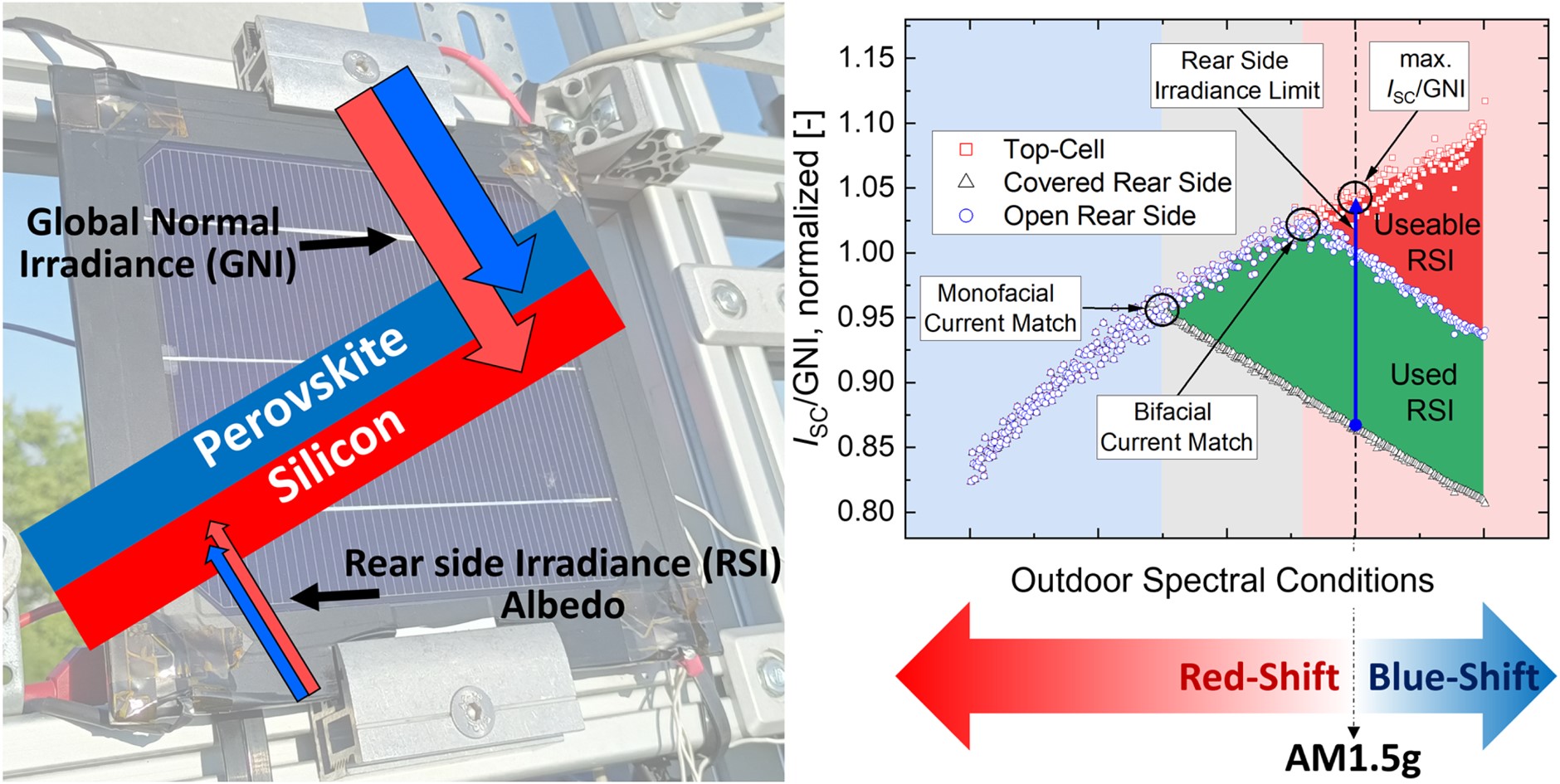
EES Solar has published its first articles. To celebrate this, we asked the authors to discuss their work in some more detail.
In this edition, we hear from David Chojniak about their study titled Quantifying the rear side contribution in bifacial tandem-photovoltaic devices.
“While both sides of a bifacial single-junction device can be characterized individually, two terminal bifacial tandem devices require simultaneous illumination from the front and rear side to determine their bifaciality characteristics.”
“The bifaciality characteristics of a two terminal tandem device are not constant but dependent on the actual sub-cell current limitation, which is determined by the incident frontside spectrum, the rear side irradiance as well as the device temperature.”
“Based on our findings from simulation and outdoor measurements, we present a quantitative method to determine the bifacial yield parameters of bifacial two terminal tandem modules. This in turn enables scaling of measurement results to different rear side irradiance conditions, which is a crucial step towards a standardized measurement procedure for bifacial two terminal tandem devices which is not available so far.”
“The gain parameters and , describing the bifacial characteristics of a bifacial two terminal tandem device can change and thus cannot be assumed constant for different irradiance conditions. This must be considered if the gain parameters determined at standard test conditions are used to extrapolate the power output of the tandem device for different scenarios such as locations, applications or times of a year.”
Want to know more about their work? Read the full paper here!

Quantifying the rear side contribution in bifacial tandem-photovoltaic devices
D. Chojniak, M. Steiner, S. K. Reichmuth, A. Schmid, G. Siefer, S. Hooper, D. Bushnell, D. Kirk, C. Case and S. W. Glunz
EES Sol. 2025, Advance Article, DOI: 10.1039/D4EL00027G

|
EES Solar is a premier interdisciplinary journal dedicated to publishing high-impact research focused on solar energy and photovoltaics. Building on the reputation of the companion journal Energy & Environmental Science for high quality and influence, EES Solar aims to be a leading publication for groundbreaking studies that span a wide range of scientific disciplines, all connected by the thread of solar. The journal welcomes studies and analyses at all scales, from groundbreaking fundamental advances to interdisciplinary research across chemistry, physics, materials science, engineering, theory, and policy and techno-economic analyses, for advancing the field of solar energy. Research that utilizes green materials and sustainable practices, championing developments that minimize environmental impact while achieving high performance is particularly encouraged.
|

